How To Convert Any Yeast Recipe To Sourdough [simple conversion]
This post may contain affiliate links.
If you've ever wondered how to convert a yeast recipe to sourdough, then I'm going to show you how easy it can be!
As a general rule, 100g of sourdough starter is equivalent to a 5-7g packet of commercial yeast. You can use this conversion when using sourdough starter instead of yeast in a recipe.
However, like most things when it comes to sourdough baking, there are some other factors you'll need to consider including the type of recipe you're using, how much liquid and flour is added to the recipe and what other leavening agents are added. You'll also need to adjust your baking process to account for the longer rising times necessary for sourdough.
You might also be interested in how to add sourdough discard to any recipe and the differences between sourdough starter and yeast.
If you don't have a sourdough starter yet, you'll find instructions for making a sourdough starter from scratch here.

Why Convert A Yeast Recipe To Sourdough?
There are lots of reasons you might want to convert a yeast recipe into a sourdough recipe where you use sourdough starter instead of yeast to make your dough rise. While we know that commercial yeast is far more predictable (and probably a whole lot easier to work with), the satisfaction of making a sourdough recipe really cannot be beaten!
Some of the reasons you might want to convert your recipe from using yeast to sourdough starter are:
- health benefits of sourdough
- more complex flavor sourdough brings
- sourdough is better for gluten sensitivities
- makes bread & baked goods last longer without preservatives
- more sustainable and allow you to make bread when commercial yeast isn't' available.
- baking with sourdough is more challenging
Health Benefits of Sourdough
The health benefits of sourdough are one of the biggest reasons for changing your favorite yeast recipe into a sourdough one. Sourdough bread is easier to digest and more nutritionally available to our bodies due to the lower levels of phytic acid it contains.
It's also naturally lower in GI and is much better for us than store bought bread, since it contains a whole host of vitamins and minerals.
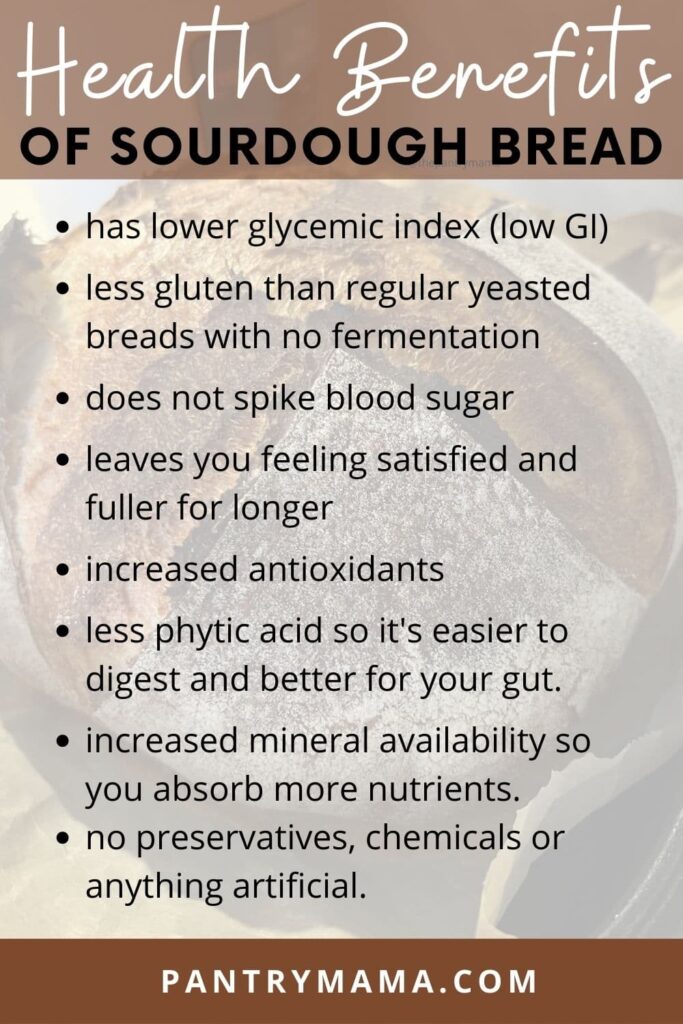
More Complex Flavors
Using a sourdough starter and the longer fermentation time that comes with that brings a more complex flavor to your baking. Sourdough bread is much more flavorful than bread made with commercial yeast because the bacteria in the starter produce lactic acid.
In general, sourdough breads and baked goods will have a distinct tanginess that's not achievable using commercial yeast. You can actually manipulate the flavor of your sourdough bread to make it more sour.
Better for Gluten Sensitivities
While sourdough bread is still a no go for people who are allergic to gluten and celiacs, it can be a better option for those with gluten sensitivities. Because sourdough bread is fermented for a longer period of time than bread made with yeast, the gluten contained in the baked bread is much lower, though it is still there. You can read more about the lower gluten levels in sourdough bread here.
Last Longer Without Preservatives
Bread make with sourdough tends to last longer and resists mold for a longer period than bread made with commercial yeast. There are no preservatives in sourdough bread, however the bacteria contained in the starter produce acetic acic which helps to ensure the bread resists molding for longer.
You can find more information on how long sourdough bread lasts here.
More Sustainable
Using a sourdough starter can be more sustainable than using commercial yeast in that once you have your starter thriving, it will live indefinitely with regular feeding. You never have to buy yeast from the grocery store again!
This could be a really important factor if you live off grid and visit the grocery store infrequently. It is also an important thing to think about after living through a pandemic where it was hard to buy commercial yeast at times (and in fact many people started a sourdough starter during this time).
Baking With Sourdough Is More Challenging
There's no denying that baking with a sourdough starter can be more challenging than baking with commercial yeast, which is often more predictable. Of course, once you're more experienced in the nuances of your sourdough starter, baking with it does become easier.
You need to find more of a rhythm when baking with a sourdough starter. In fact, you almost need to become one with your starter - which is kind of cool, because some of the wild yeast in your starter jar actually come from your own hands!
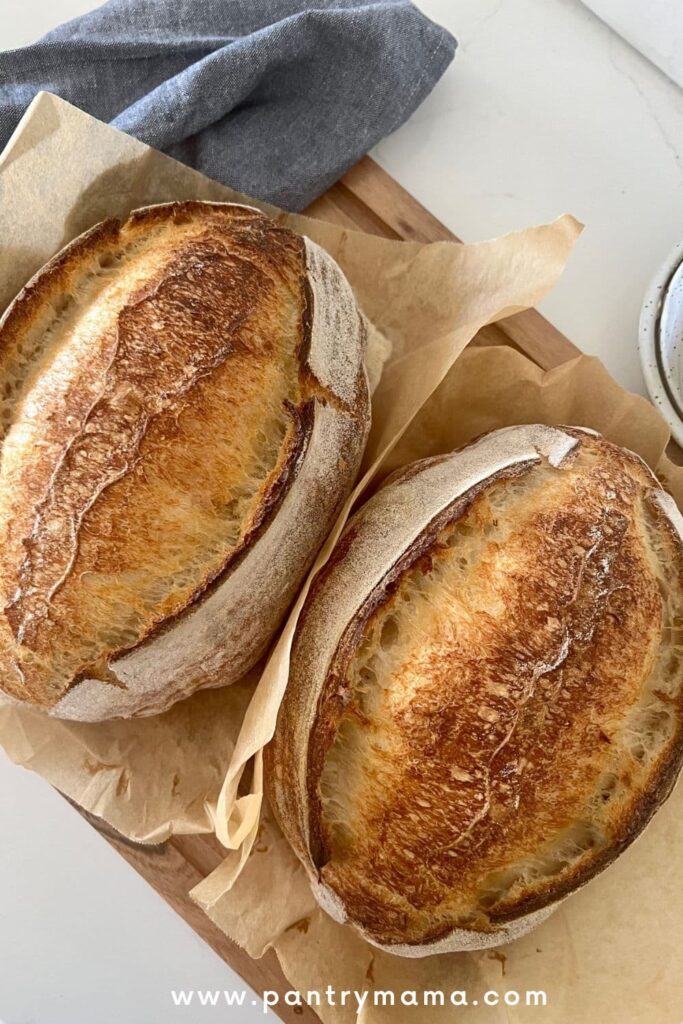
What To Consider When Converting A Yeast Recipe To Sourdough
When you are substituting sourdough starter for yeast, there are some things you will need to think about before starting your recipe:
- The amount of yeast in your recipe
- The amount of flour and water used
- The time allowed for rising and proofing
Generally, you can substitute a packet of yeast for 100g of sourdough starter. If your recipe uses less than a packet of yeast, you can use less sourdough starter, however it won't make too much difference because of the way wild yeast works.
The amount of flour and water used in the recipe is important because you will need to reduce these to accomodate for the flour and water in your sourdough starter.
The time allowed for rising and proofing your dough will also need to be extended to accomodate for the fermentation process of your sourdough starter.
All of these steps are explained below.
How To Use Sourdough Starter Instead of Yeast In A Recipe
This easy conversion will allow you to change practically any recipe that uses yeast into a sourdough recipe and substitute your sourdough starter for yeast. There's a printable version at the end of the post.
- Weigh out 100g of active sourdough starter. This will be added INSTEAD of the yeast packet in your recipe (100g of starter is equivalent to 7g of yeast or 1.5 tsp).
- Reduce the amount of flour in the recipe by 50g and the water by 50g.
- Add the sourdough starter to the ingredients, along with the reduced amount of flour and water and proceed with the instructions.
- Increase the rise time for the recipe to accomodate your sourdough starter (you will need to more than double the rising time in most cases but it will depend on what you're making).
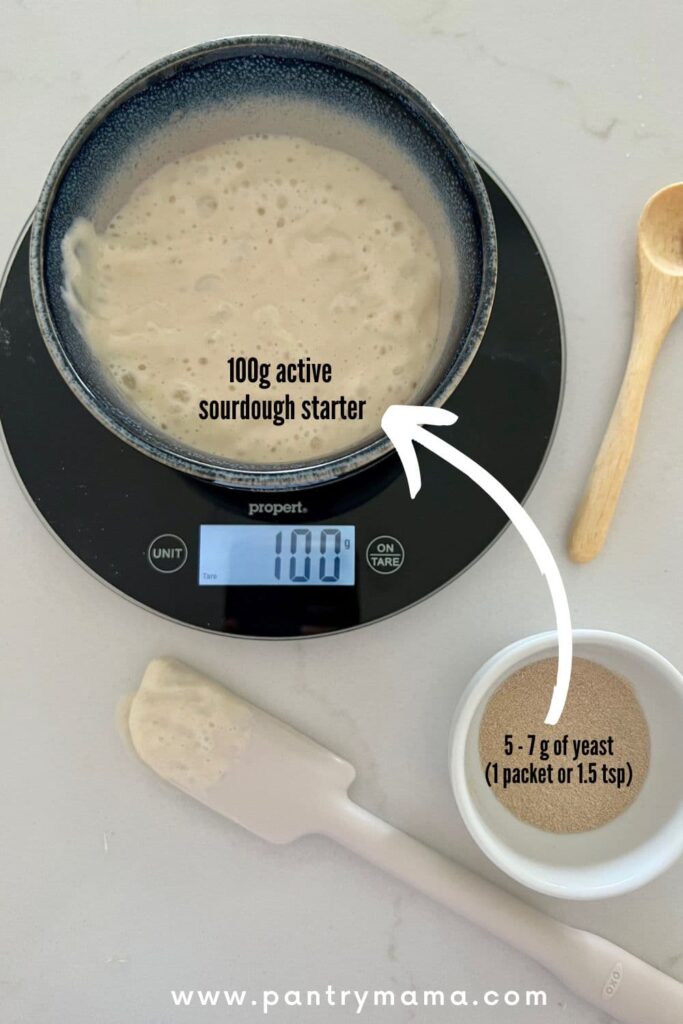
Remember, if you use more than 100g of sourdough starter then you would need to reduce the flour and water by the extra amount. Adding more sourdough starter will also decrease the rising time needed - but be warned that it may also make your dough very sticky and hard to work with.
In general, 100g of sourdough starter is a nice amount to work with and won't cause detrimental effects to your dough or recipe.
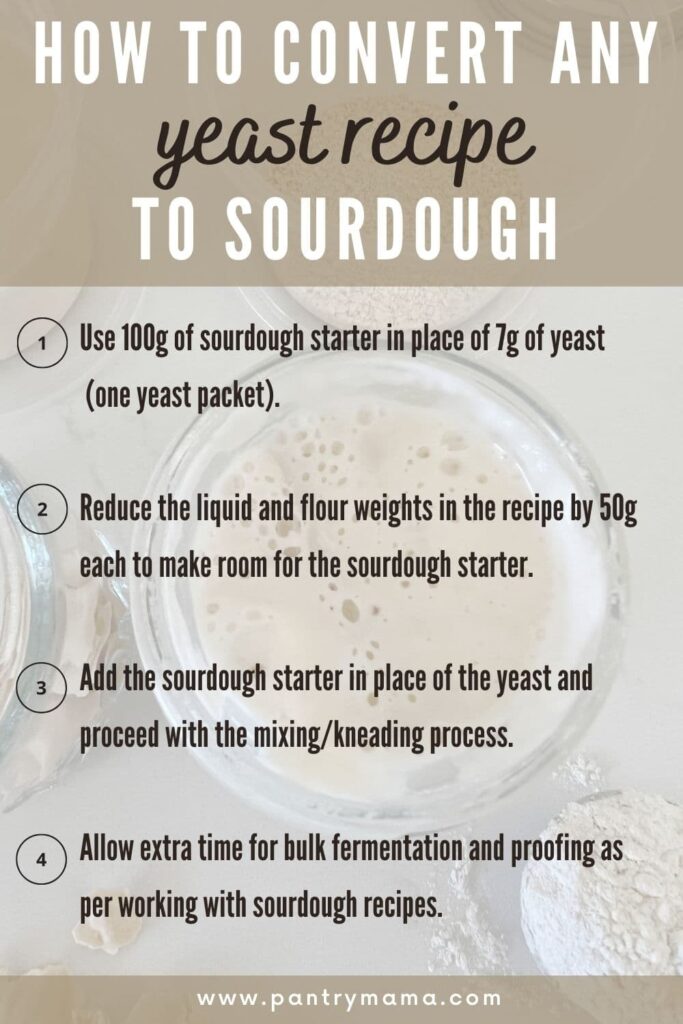
Hydration of Sourdough Starter Matters
The hydration of your sourdough starter matters when you're using it replace yeast in a recipe. You want your sourdough starter to be 100% hydration - that is made up of 50% water and 50% flour (plus all the lovely wild yeast and bacteria floating around in there).
The reason the hydration of your sourdough starter is so important is that you are going to replace 50g of water and 50g of flour in the recipe you're making with your sourdough starter, so you want it to be made up of 50g of water and 50g of flour.
This is the same as when you are adding sourdough discard to a recipe.
You can read more about hydration in sourdough baking.
How Does Using Sourdough Starter Instead of Yeast Change the Baking Process?
When adding sourdough starter to a yeast recipe, the baking process must change to accomodate the wild yeast. Baking with a sourdough starter is much more unpredictable and will often take longer than you anticipated.
While using commercial yeast in a simple sandwich bread might only take 1 to 2 hours to rise, when substituting the yeast with sourdough starter, you will more than likely need to wait 4 to 6 hours for the dough to rise, plus extra time for proofing.
The rise time in sourdough baking is called bulk fermentation and it is one of the most important steps in the whole process. If you get this right, you will have the most amazing bread. Get it wrong, and you can end up with a gummy disaster. Some sourdough recipes also call for a cold fermentation period.
Example of Yeast to Sourdough Bread Recipe Conversion
So now we've learned how to convert a yeast recipe to sourdough, let's use an example recipe to demonstrate the technique.
This is a basic white bread recipe using a packet of yeast for leavening:
500g flour
250g water
30g olive oil
7g yeast
10g salt
To change the recipe from leavening with yeast to sourdough starter you would need to do the following:
500g flour ---> 450g of flour250g water ---> 200g of water
30g olive oil7g yeast ---> 100g of sourdough starter
10g salt
When Doesn't A Conversion from Yeast To Sourdough Work?
While almost any recipe can be changed from using commercial yeast to sourdough as its leavening agent, there are times when this won't necessarily work.
For example, if you are using a bread machine to bake your sourdough conversion bread, you may find it ends in disaster because the bread machine will not account for the change in rising times needed for sourdough, unless you follow a specific recipe for sourdough bread in a bread machine.
Frequently Asked Questions
As a general rule, 100g of sourdough starter can be used to replace one packet of yeast (a packet usually contains 5-7g of commercial yeast).
No, while you will need to extend the rise time to accomodate for the sourdough starter, you shouldn't need to increase the baking time for the recipe.
No, baking powder and baking soda act differently than yeast. Baking powder is used in quick breads and cakes to give them lift and make them light and fluffy, but it works differently than the way yeast rises bread. You can use sourdough starter alongside baking powder and or baking soda to increase the flavor profile in quick breads, cakes and muffins, but not instead of.
Yes you can just add the sourdough starter to the recipe in place of the yeast packet without actually subtracting the flour and water, however this will increase the size of the dough, as well as require other elements to be increased like sugars, fats or oils. As you become a more experienced baker this is something you can experiment with.
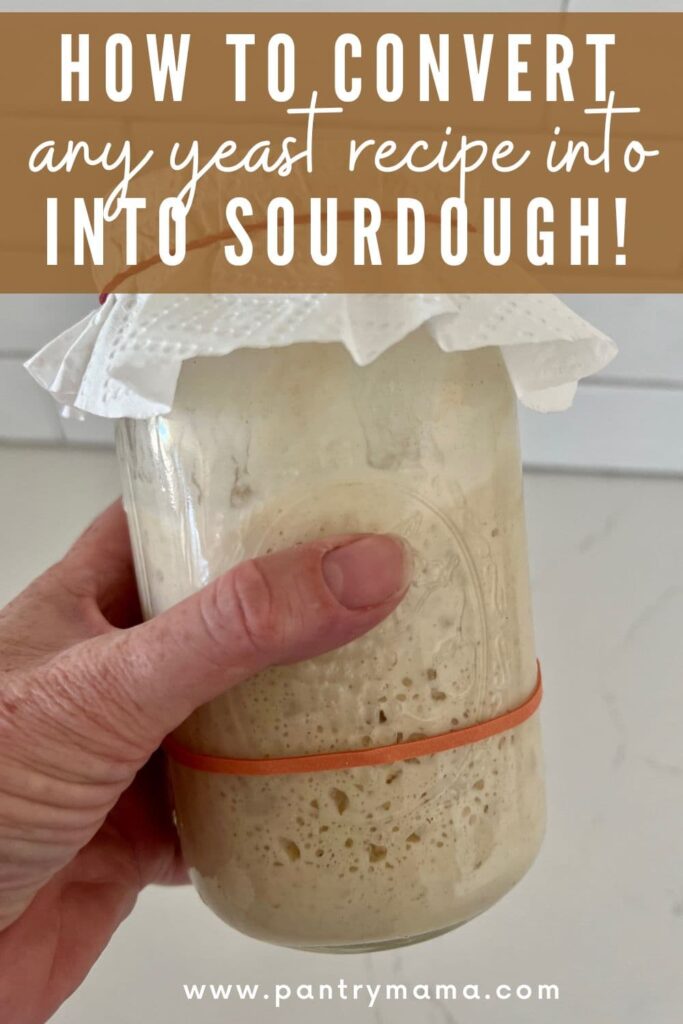
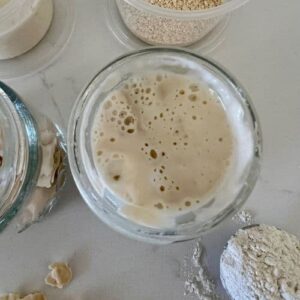
How To Convert Any Yeast Recipe to Sourdough
Equipment
- 1 Kitchen Scale
Ingredients
- 100 g Sourdough Starter Active & Bubbly
Instructions
- Weigh out 100g of active sourdough starter. This will be added INSTEAD of the yeast packet in your recipe (100g of starter is equivalent to 7g of yeast).
- Reduce the amount of flour in the recipe by 50g and the water by 50g.
- Add the sourdough starter to the ingredients, along with the reduced amount of flour and water and proceed with the instructions.
- Increase the rise time for the recipe to accomodate your sourdough starter (you will need to more than double the rising time in most cases but it will depend on what you're making). See notes below for further information.
Nutrition

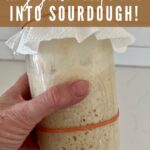

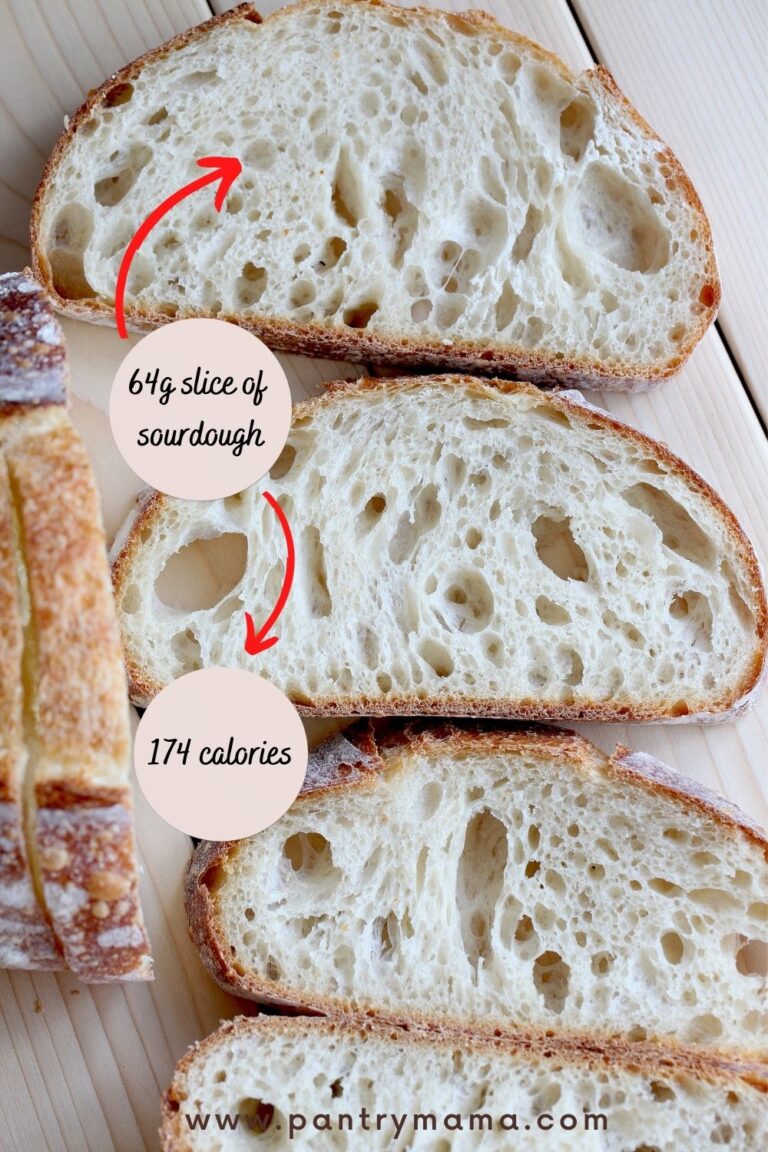
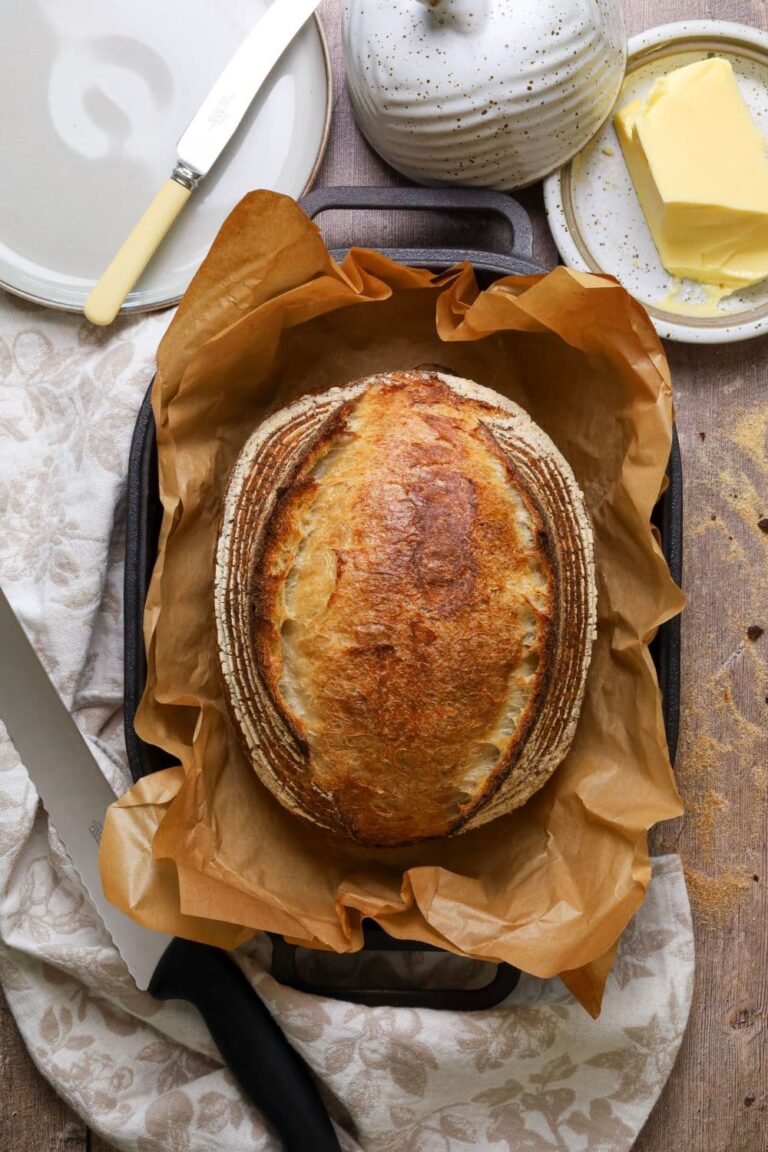


Thank you ! This is exactly what I was looking for!
Thank you for making this information so clear and understandable. I have some favorite yeast recipes I am anxious to try. One is called Pioneer Bread which has some cornmeal.
This is the best site for understanding the use of sourdough starter. I've spent a lot of time trying to find this information. It's very easy to find web pages that show you how to make the starter and nearly none that explain how to use your starter. Thank you very much, you're bookmarked in my bread file!
Thank you so much for your kind words! Happy to help you on your sourdough journey 🙂
I feel like I missed something. At the beginning the post said you can substitute starter for yeast without subtracting flour and water, but step 2 of the instructions says to subtract flour and water. Everything else looks really straightforward, but could you clarify this please?
Sorry if it's not clear, but yes even though you are using sourdough starter instead of yeast, you do need to subtract the flour and water to accommodate the sourdough starter.
These instructions are really helpful (just like all your other articles about sourdough)! One question though, do we use the same formula when replacing FRESH yeast with sourdough? I noticed many brioche recipes require fresh yeast which is not easy to find where I live.
Can I use my Kitchen Aid mixer with sour dough starter? I have been making 100% Kamut ( half white/ half whole grain) bread with the Kitchen Aid and want to continue using the same recipe with sourdough. Thank you for so much helpful information.
What about recipes that call for milk instead of water? Since there is fat in the milk, do I need to add more fat back in a different form?
What about the butter, sugar and milk content in some breads? Will that effect the bread?
I need this information! Thank you!
Thank you! other sites make it impossible to decipher & use!
This is all new to me ( sourdough baking) but this helps !
🌷🌷🌷
Thank you for making the instructions so easy. I have looked and looked for this information.
Thank you so much for an explicit explanation, I've been pondering on that kind of convertion for a few days now 😅 And now everything looks pretty simple 😁 Big thank you from the bottom of my heart 💐
Thank you for this simple explanation, love this website
Does this apply the same to sourdough recipes like Overnight cinnamon rolls and other fermented desserts?
I'm not sure what you mean here as these are already sourdough recipes?
Can this be applied to no-knead recipes for the rise time?
I'm not sure I understand what you're asking here, can you please clarify so I can answer accurately 🙂
My recipe calls for water and milk. Do I reduce both liquids, or just the water? Is it safe to use milk in the recipe since it will need to rise for at least twice as long?
You only need to reduce the liquid by the same amount that is in the starter. I would reduce the water, not the milk. It's fine to leave the dough out of the counter with milk as the sourdough starter will preserve it 🙂
If a recipe calls for discard plus instant yeast can you just swap the same amount of active starter?
Yes you can, you'd just need to adjust the rise time to suit the active starter.
This conversion is exactly what I was looking for. I even asked a couple of branded websites and was told to experiment by one; the other site was radio silence. Thank you for the clear info!
This is a huge help! I am converting my husband's grandma's bread recipe to use starter in place of the yeast. The recipe calls for 8-10 min of kneading the dough. Should I do this or convert to a traditional sourdough method of folding the dough?
Glad to know how to do this!! Thanks for sharing the knowledge.
thank you exactly what I wanted to know.